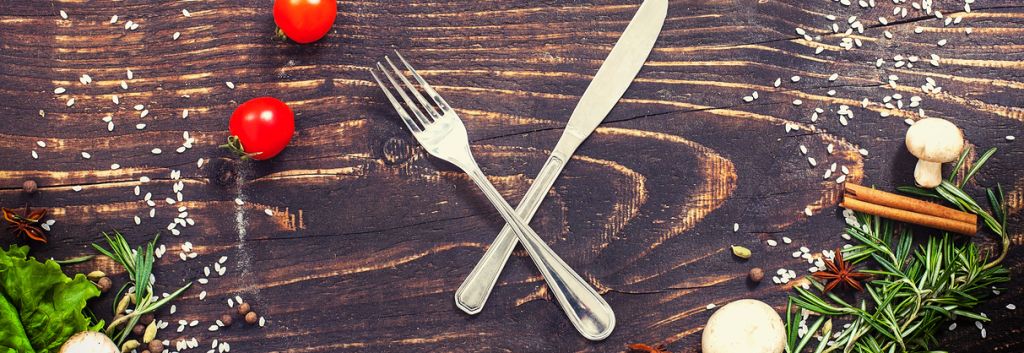Newsletter Signup - Under Article / In Page
"*" indicates required fields
What is ‘cultured meat’ and how can it address the most pressing global problems? Let us introduce you to some of the brilliant minds behind it.
The world’s population is predicted to reach almost 10 billion by 2050, and we don’t have the resources to feed all of them… yet. The meat industry currently uses 70% of all agricultural land and accounts for 18% of greenhouse emissions, even higher than transportation. As the population grows and so does the meat demand, these numbers will become unsustainable.
Livestock farming also uses 80% of all antibiotics, which promotes the appearance of antibiotic-resistant bacteria and poses a huge risk for our health. In addition, cattle are prone to bacterial infections and viral outbreaks that can be passed on to humans. Valuable resources and taxpayer money are thrown away in the regular recalling of contaminated stock.
So what is this green tech that can solve so many problems simultaneously? Last week I had the chance to meet researchers and companies committed to developing the food technology of the future in Maastricht, Netherlands, the main hub of the field. Their goal is to make meat without animals, which will significantly reduce environmental impact, disease outbreaks and animal suffering. Let me introduce them…
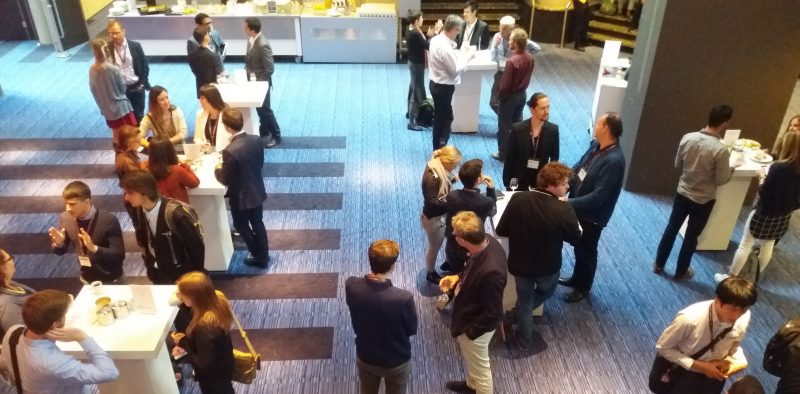
The First Cultured Burger
Mark Post grew the first cow-less burger, which was tasted live in London in 2013. And you might be asking yourself how is this even possible. Well, the starting point is a muscle biopsy from a cow breed known as Belgian Blue, which has a natural deletion of myostatin. This gene is responsible for the inhibition of muscle cell growth.
Satellite cells are isolated from the sample; these are pluripotent cells that can proliferate and differentiate into skeletal muscle. The cells are fed all the required nutrients to grow enough quantities of muscle in the lab. You just need to mix and grind them and voilà, you have your hamburger!
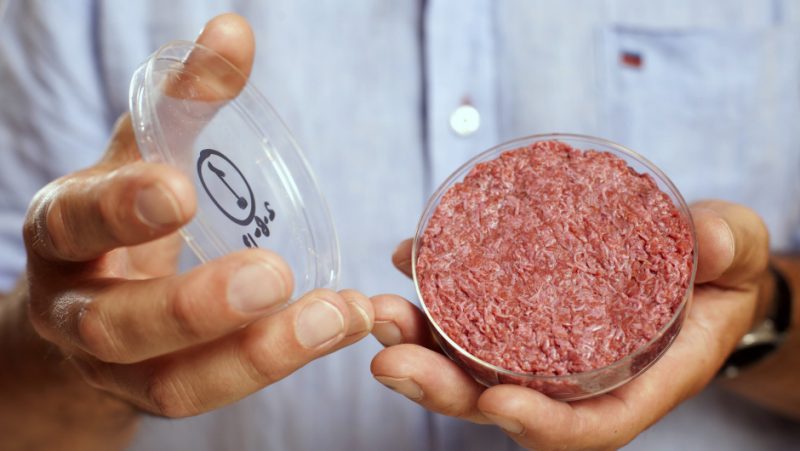
Mass production
The first burger was an amazing achievement that showed that making animal-free meat is feasible. But there’s still plenty of work to scale-up the process: this first experiment cost €250,000 and lots of space to make just one meal.
Mark’s team at the University of Maastricht is already working on developing new techniques to improve the process. Andrew Stout is studying edible, non-animal materials to use as scaffolds for the animal muscle cells to grow in. In the UK, Abi Glencross is investigating how to make 3D steaks, which is currently a huge challenge: growing muscle sheets higher than 0.5mm makes it difficult to deliver nutrients to the cells in the inner layers.
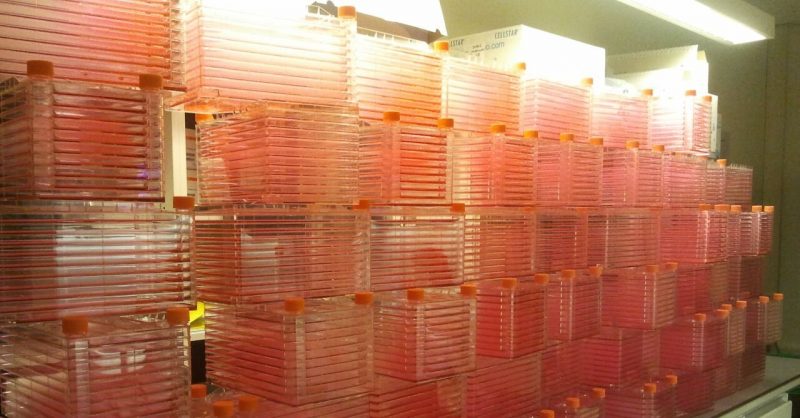
Open-source Cell lines
One of the main bottlenecks of the process at the moment is the development of cell lines, which can take several months. In order to address this, a new lab is opening in Paris this November dedicated to building a library of starter cultures with an open license. This will allow scientists to buy the cell lines on a budget and save tons of valuable time and resources.
Daan Luining, who worked with Mark Post to create the first cultured burger, will be running the lab at La Paillasse. The funding comes from New Harvest, a non-profit from the US that supports research in cellular agriculture, which includes not only meat but also animal-free milk, leather, and egg white.
Isha Datar, New Harvest’s CEO, told me that Europe was the most economic option to set up this lab. Unfortunately, cellular agriculture is underfunded: the novelty of these projects in the intersection of food and biotechnology makes them difficult to fall under the umbrella of dedicated funds.

Turkey, Fish, the sky is the limit!
Beef is not the only meat that can be grown out from the animal. Researchers are already working on developing sustainable alternatives for all your favorite meals! Marie Gibbons is the first person to ever grow turkey nuggets, while Michael Selden will soon be working on tuna and salmon.
The researchers commented that there are no limits to what can be grown in the lab, the future could bring us rarer foods like octopus or lobster! The ultimate goal is to substitute all traditional farming for a new technology that is sustainable, safe and accessible.
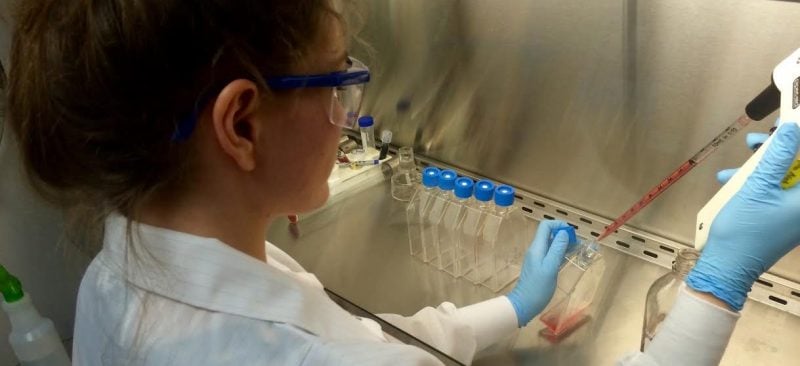
Commercialization
While researchers perfect the process, the meat industry needs to prepare for the incorporation of the new technology. In a panel discussion featuring industry experts, I learned that the first and biggest impact of the technology would be on farmers, whereas processing and manufacturing will only require small changes. The industry will benefit from a source with consistent quality that is not available nowadays.
Government regulations are a challenge as well, but the European Union already includes cellular agriculture products in its regulatory procedures. Once the technology is ready, it should take around 1-2 years for it to be approved. The experts expect that the countries that signed the UN Paris Agreement to reduce greenhouse emissions will be particularly interested in implementing this technology.

There’s a lot of debate on what the public acceptance will be like. But we already have some good indicators: the plant-based milk market is currently €5.3B and is expected to double by 2020. This summer, Impossible Foods‘ plant-based burgers were launched in the US. This company, backed by Bill Gates, creates burgers with the texture of real meat but generating a quarter of the greenhouse gas emissions.
Cultured meat is just the next step towards a product with the same composition as our usual meals but safer and with a sustainable origin. Who’s in?
Images via Shutterstock; the author; New Harvest
Partnering 2030: FME Industries Report




